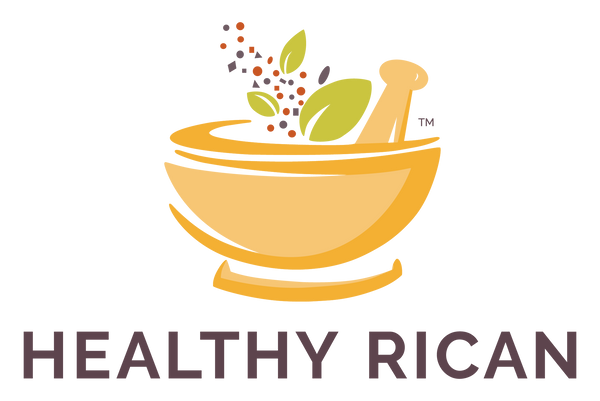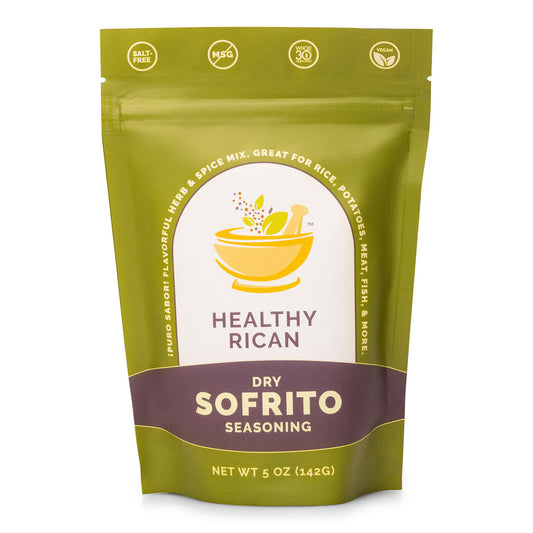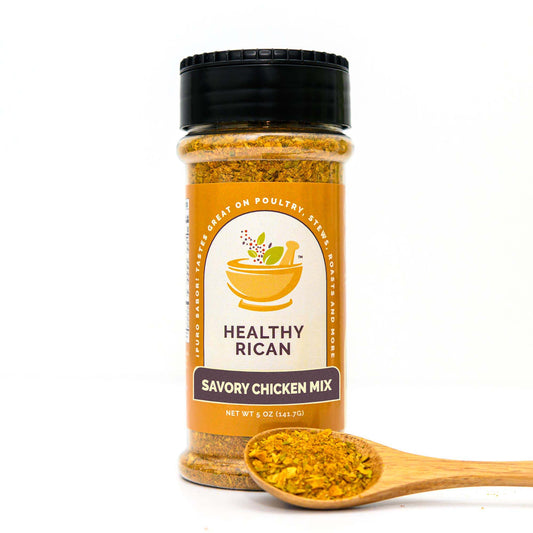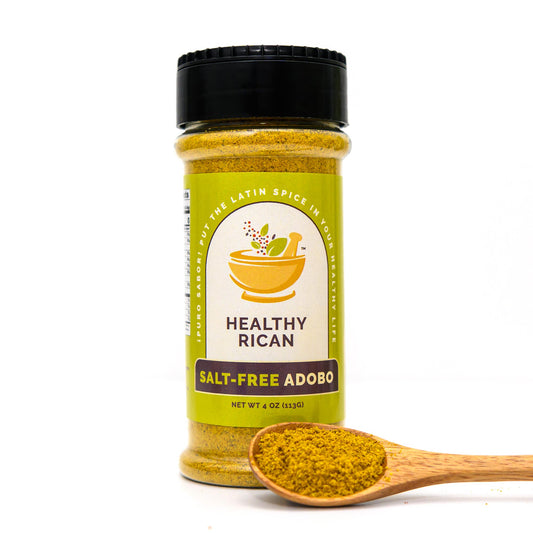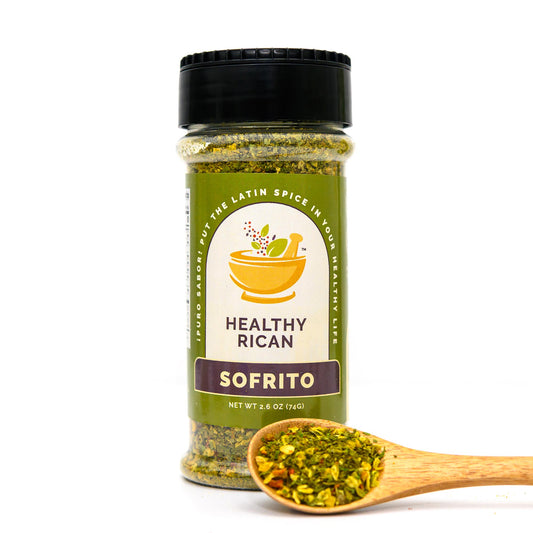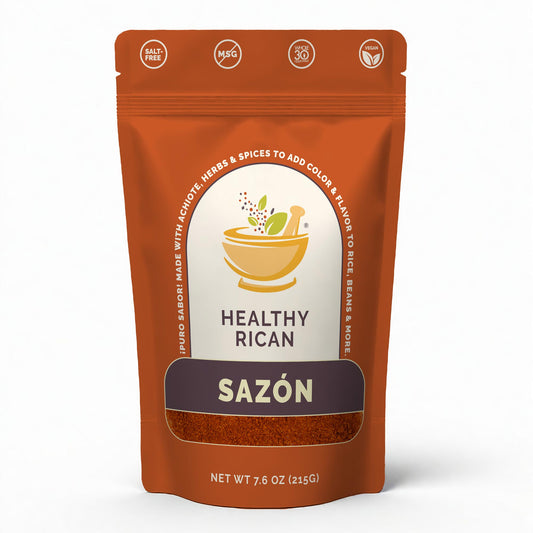Share
Rice has gotten a bad reputation over the years. In this blog post, I’ll spill the beans (pun intended) and share all the facts you need to know about rice. That way, you can decide which one is best for you!
Brown rice, white rice, yellow rice… jasmine rice, basmati rice, wild rice? So many options, but which rice is healthy or healthier? Which rice will give the best health benefits and nutrition? Should rice be consumed when having health conditions like diabetes, high cholesterol, etc?
While this blog and website does not provide medical claims or health advice, it’ll provide facts and resources that can be helpful when learning which option might be good for you. Always consult your doctor or nutritionist before making lifestyle and dietary changes.
Let’s dive in… and start with some of the most frequently asked questions (FAQ’s).
What is the difference between brown rice and white rice?
Brown rice is a whole grain that contains the bran, germ, and endosperm, while white rice is stripped of its bran and germ, leaving only the endosperm. This means that brown rice is higher in fiber, vitamins, and minerals than white rice. It also has a lower glycemic index, which means it releases glucose slowly into the bloodstream and can help regulate blood sugar levels. Additionally, brown rice is higher in antioxidants and phytonutrients.
Does white rice increase your blood sugar?
White rice has a higher glycemic index, which means it can cause a rapid increase in blood sugar levels. However, that doesn’t mean that white rice shouldn’t be enjoyed. Almost never white rice is consumed on its own. Typically it is enjoyed with beans (high in fiber), protein and vegetables. Well combined, there is no reason to not enjoy white rice in moderation.
Can someone with diabetes consume white rice?
Yes, especially when consumed in moderation and paired with vegetables, lean protein, and healthy fats to slow down the absorption of sugar into the bloodstream. Additionally, it is best to consult a healthcare provider or a registered dietitian to create an individualized meal plan for people with diabetes.
What is parboiled rice?
Parboiled rice is rice that has been partially boiled in the husk.
Is parboiled rice healthier than brown rice?
Parboiled brown rice is more nutritious than parboiled white rice. However, it doesn't contain as much of the minerals you'll find in regular brown rice.
Is Jasmine rice the same as white rice?
Essentially yes, they both have the same amount of nutritional value.
How do you make yellow rice?
Yellow rice is basically white rice that has been tinted with either spices or artificial coloring. In Latin cultures, traditionally rice is colored with achiote seeds (annatto). The achiote seeds could be turned into an achiote oil, or grounded and blended with other spices which we now know as sazón. You can find our version of sazón here.
How do you make Spanish rice?
There are many ways to make Spanish rice. Each country has their own way, but essentially the rice is cooked with a base consisting of various herbs and vegetables like sofrito, or a tomato garlic base. Then cooked with chicken broth or bouillon, and many times with added meats, vegetables, and legumes. Check out our recipe for rice and beans below.
Rice is considered a staple food in many countries and provides a source of energy for the body.

Some health benefits of rice sources include:
1. Energy Booster: Rice is a rich source of carbohydrates providing an instant supply of energy to the body.
2. Regulates Digestion: Rice is low in fiber, easy to digest and gluten-free, which makes it an ideal diet for people suffering from digestive disorders.
3. Controls Blood Sugar: Brown Rice has a low glycemic index, which means it releases glucose slowly in the bloodstream, preventing spikes in blood sugar levels.
4. Reduces the Risk of Heart Diseases: Brown rice is rich in soluble fiber, which helps reduce bad cholesterol levels in the body, thus reducing the risk of heart diseases.
5. Protects Against cancer: Whole grain rice contains antioxidants and phytochemicals that fight against cancer.
6. Boosts Immune System: Rice contains vitamins and minerals, including vitamin E, iron, and zinc, which help to boost the body's immune system.
7. Provides Essential Nutrients: Rice is a good source of vitamins and minerals, including thiamin, niacin, magnesium, and phosphorus, which are essential for the body's overall health.
8. Promotes Weight Loss: Rice is low in fat and calories making it a perfect choice for people on weight loss diets.
9. Prevents Constipation: White rice is a good source of insoluble fiber, which adds bulk to the stool and helps prevent constipation.
10. Helps in Bone Development: Rice contains magnesium, which is essential for the development and maintenance of healthy bones.
Overall, incorporating rice sources into a balanced diet can provide numerous health benefits.
Here some portion examples:
- 1 cup rice and beans, with a roasted chicken thigh, with a side salad or steamed veggies.
- 1 cup rice and beans with pan fried chicken breast with onions, peppers and zucchini.
- 1 cup rice and beans, ½ avocado, and a stir fry with asparagus, mushrooms, onions and peppers.



Where can I find facts about rice health benefits?
You can find facts about rice health benefits from reputable sources such as government health agencies, academic journals, and medical websites. Some examples of reliable sources of information on rice health benefits include:
- National Institutes of Health (NIH): The NIH is a government health agency that provides information on a variety of health topics, including nutrition and diet. You can find information on the health benefits of rice and other grains on their website.
- The American Heart Association (AHA): The AHA provides information on heart-healthy diets, and rice is often included as part of a balanced diet. You can find information on the health benefits of rice and other grains on their website.
- The Academy of Nutrition and Dietetics (AND): The AND is a professional organization for registered dietitians and nutrition professionals. You can find information on the health benefits of rice and other grains on their website.
- PubMed Central: PubMed Central is a database of academic research articles. You can search for studies on the health benefits of rice and other grains on their website.
Remember to always check the sources of the information before relying on them to ensure they are reliable and backed up by scientific evidence.
Sources:
https://pubmed.ncbi.nlm.nih.gov/31915876/
